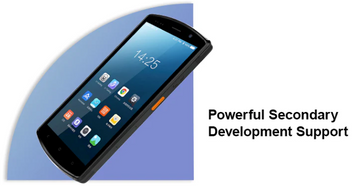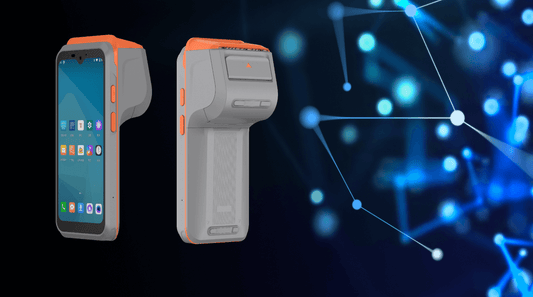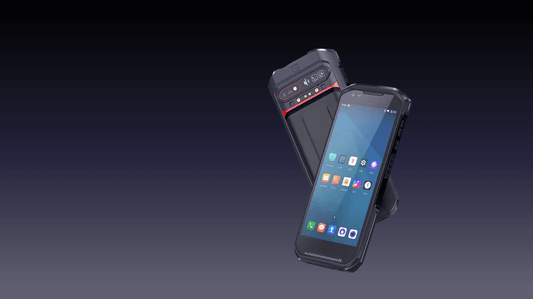Case Study: How a Hospital Streamlined Patient Tracking and Equipment Management Using Rugged PDAs
In the fast-paced environment of hospitals and clinics, efficient patient tracking and equipment management are critical to delivering high-quality care. Traditional paper-based systems and non-rugged mobile devices often lead to inefficiencies, errors, and delays. This case study examines how City General Hospital implemented rugged PDAs (Personal Digital Assistants) to enhance patient flow, reduce equipment loss, and improve operational efficiency.
Background: Challenges in Patient and Equipment Management
Before adopting rugged PDAs, City General Hospital faced several challenges:
-
Manual Patient Tracking – Nurses and staff relied on paper charts and whiteboards, leading to miscommunication and delays.
-
Lost or Misplaced Equipment – Medical devices such as IV pumps, wheelchairs, and monitors were frequently misplaced, causing procurement delays and rental costs.
-
Barcode Scanning Limitations – Standard tablets and smartphones were not durable enough for hospital environments, often breaking or malfunctioning.
-
Real-Time Data Gaps – Staff struggled to access up-to-date patient records, leading to inefficiencies in care coordination.
To address these issues, the hospital implemented rugged PDAs with barcode scanning, RFID tracking, and real-time data synchronization.
Implementation of Rugged PDAs
1. Device Selection
The hospital chose rugged PDAs with the following features:
-
Durability – Waterproof, dustproof, and drop-resistant (IP67 & MIL-STD-810G certified).
-
Barcode & RFID Scanning – For tracking patients, medications, and equipment.
-
Real-Time Wi-Fi/4G Connectivity – Ensuring seamless integration with the hospital’s EHR (Electronic Health Record) system.
-
Long Battery Life – To support 24/7 operations without frequent recharging.
2. Patient Tracking Workflow
-
Each patient was assigned a barcoded wristband upon admission.
-
Nurses used rugged PDAs to scan wristbands before administering medication, reducing errors.
-
Real-time updates in the EHR system allowed doctors to track patient status instantly.
3. Equipment Management System
-
High-value equipment (IV pumps, defibrillators, etc.) was tagged with RFID labels.
-
Staff used rugged PDAs to scan equipment locations, updating an asset management dashboard.
-
Automated alerts notified biomedical teams when equipment needed maintenance.
Results and Benefits
1. Improved Patient Care Efficiency
-
30% reduction in medication errors due to barcode scanning.
-
Faster patient admissions and discharges with digital records replacing paper forms.
-
Real-time bed tracking reduced wait times in the ER by 20%.
2. Reduced Equipment Loss and Costs
-
40% decrease in lost equipment due to RFID tracking.
-
$150,000 annual savings by reducing rental fees for missing devices.
-
Preventive maintenance alerts extended equipment lifespan by 15%.
3. Enhanced Staff Productivity
-
Nurses saved 1.5 hours per shift by eliminating manual chart updates.
-
Doctors accessed patient records instantly, improving decision-making speed.
-
Fewer IT support calls due to rugged PDA durability.
4. Data-Driven Decision Making
-
Hospital administrators used PDA-generated reports to:
-
Optimize staff scheduling.
-
Identify bottlenecks in patient flow.
-
Track equipment utilization trends.
-
Challenges and Solutions
1. Staff Training & Adoption
-
Initially, some nurses resisted the change, preferring traditional methods.
-
Solution: Conducted hands-on training sessions and demonstrated time-saving benefits.
2. Integration with Existing EHR Systems
-
The hospital’s legacy EHR required customization for PDA compatibility.
-
Solution: Worked with software providers to ensure seamless API integration.
3. Initial Investment Costs
-
Rugged PDAs have a higher upfront cost than consumer-grade tablets.
-
Solution: Justified ROI through cost savings in equipment recovery and efficiency gains.
Conclusion
City General Hospital’s adoption of rugged PDAs transformed its patient tracking and equipment management processes. By replacing outdated paper-based systems with real-time digital tracking, the hospital achieved:
-
Fewer medical errors
-
Lower operational costs
-
Improved staff efficiency
-
Better patient experiences
Recommendations for Other Hospitals
-
Start with a pilot program in one department before hospital-wide rollout.
-
Choose PDAs with healthcare-specific features (e.g., disinfectant-resistant screens).
-
Integrate with existing EHR and inventory systems for maximum efficiency.
-
Train staff thoroughly to ensure smooth adoption.
Rugged PDAs offer a cost-effective, long-term solution for hospitals seeking to modernize operations while improving patient care.
No comments









0 comments